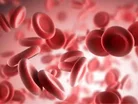Polymer Nanosponges Suck Toxins Out Of Blood Stream

Written by Dale McGeehon
Read The May Edition Of Healthcare Global Here.
Say, in the near future you're going on a hike or a camping trip and you want to be nearly impervious to the harmful effects of bee stings or bites from poisonous snakes. It might be a good idea to get inoculated with "nanosponges" before you go.
These biocompatible polymer-based "sponges" - developed by engineers at the University of California, San Diego - are 3,000 times smaller than a red blood cell. But they are wrapped in red-blood-cell membranes and act a lot like red blood cells. They circulate in the bloodstream and slurp up a wide range of toxins before those toxins can do much damage to healthy tissue.
The nanosponges - about 85 nanometers in diameter - soak up toxins that damage healthy cells by poking holes in cell membranes. When the poking causes a pore to form, uncontrolled ions rush in and the cell dies.
Nanosponges Treat A Wide Variety Of Toxins
Other anti-toxin treatments need to be custom-synthesized for each specific type of toxin. But nanosponges can absorb pore-forming toxins regardless of their molecular structure. Each sponge can absorb tens or hundreds of toxin molecules before the sponge itself is absorbed and metabolized by the liver, with no ill effects.
"This is a new way to remove toxins from the bloodstream," says Liangfang Zhang, a nanoengineering professor at the University of California San Diego (UCSD) Jacobs School of Engineering and the senior author on the study. "Instead of creating specific treatments for individual toxins, we are developing a platform that can neutralize toxins caused by a wide range of pathogens, including MRSA [Methicillin-resistant Staphylococcus aureus] and other antibiotic-resistant bacteria."
The researchers claim that the sponges would potentially provide life-saving treatment to those who are allergic to bee stings or those bitten by poisonous snakes.
89 Percent Survival Rate For Mice
In the study, mice that had been pretreated with the nanosponges had a 89 percent survival rate when they were later injected with a lethal dose of a toxin from MRSA. Mice that received the nanosponges after being injected with the lethal dose had a 44 percent survival rate. Those mice that did not receive nanosponges had a 100 percent mortality rate.
Now the researchers need to make sure nanosponges can work as well in humans. So they are pursing clinical trials and making sure the research can translate into proven therapies.
Polymer Nanosponges Effective Against MRSA
"One of the first applications we are aiming for would be an anti-virulence treatment for MRSA," says "Jack" Che-Ming Hu, the first author on the paper that was published in Nature Nanotechnology in April. "That's why we studied one of the most virulent toxins from MRSA in our experiments."
The team at Zhang's lab makes nanosponges by separating red blood cells from a small sample of blood, then puts those cells into a solution that causes them to burst, releasing hemoglobin and leaving the cells' outer membrane behind. Then researchers stuff the ball-shaped polymer nanosponge into the membrane like a pimento is stuffed inside an olive.
A single blood cell membrane is large enough to make thousands of nanosponges because the polymer sponges are 3,000 times smaller than a blood cell. The amount of toxin a nanosponge can absorb depends on the toxin. For example, each nanosponge can only absorb 85 molecules of MRSA, but can suck up to 850 molecules of bee venom.
In mice, the nanosponges have a half-life of 40 hours. Eventually, they are metabolized by the liver, which brakes down both the sponges and the toxins and eliminates them from the body without any known harmful effects.
About the Author
Dale McGeehon is the head blogger for Polymer Solutions Incorporated(PSI), an independent plastics and polymer testing laboratory. Dale has been a journalist and editor for more than 25 years, and covers plastic testing and failure for the PSI Newsblog.



